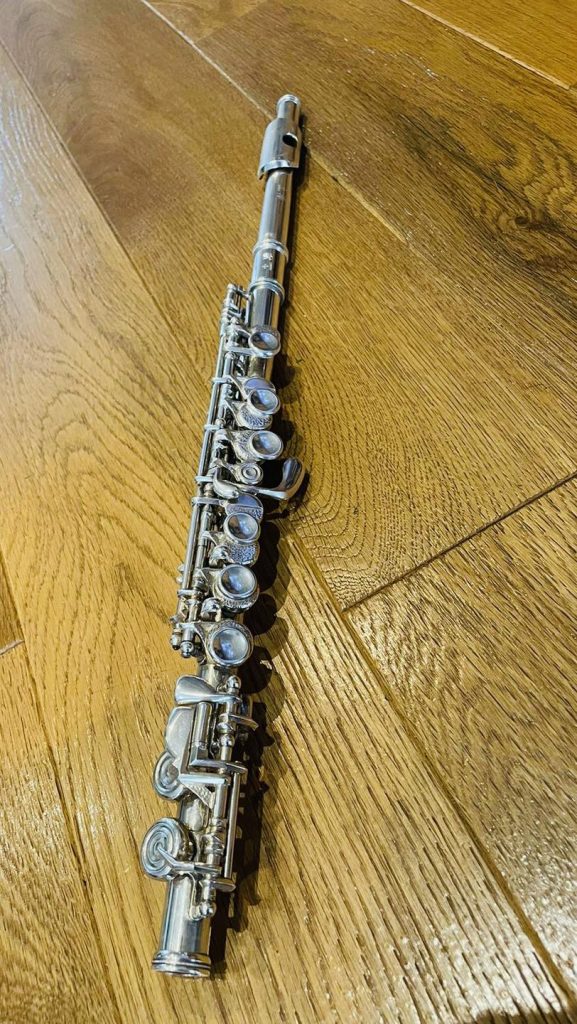Our Instruments
We play a range of different types of flute that you may not even knew existed, and are the envy even of some professional outfits. Our range of instruments allows us to achieve the best possible orchestral sound.
We provide instruments to our members at no additional cost.
We also have a full range of percussion; including an orchestral bass drum, three timpani, glockenspiel, xylophone and many other items. If you are interested in playing percussion with us, please do get in touch!
Below is some more information on our flutes, beginning with the highest pitched.

Piccolo
Starting at the very highest of sounds, the Piccolo is pitched in the key of C and is the highest sound not just in Carluke Primrose, but of of a full orchestra. It is made of wood and is a full octave higher than the standard Concert flute. They are very small and you have to be pretty delicate to play one of these. (Wikipedia article)

Treble Flute
The Treble flute is pitched a fifth above the Concert flute, but below the Piccolo and is in the key of G. These days they can be quite rare, but we’re lucky to own five of them. (Wikipedia article)

Concert Flute
Concert flutes or ‘C’ Flutes are most common and recognisable; and take up the largest proportion in the ensemble. A grant from the Scottish Arts Council means that we can be proud owners of eight solid silver Trevor J. James Virtuoso flutes. Most of our music is arranged with three different parts for ‘C’ flutes, Solo, 1st and 2nd Concert. (Wikipedia article)

Alto Flute
The Alto flute is larger than than the ‘C’ flute but smaller than the C Bass. The Altos make up the second largest proportion in the ensemble after the Concert flutes and are pitched in G. Most of our Altos were made by Trevor J. James & Co. (Wikipedia article)

Bass Flute
The C Bass flute – or simply just “bass flute” – is a full octave below the concert flute in the key of C. Music for these instruments is typically written one octave higher than it sounds, for clarity purposes. We have four of these instruments manufactured by Philipp Hammig, replacing our old almost unplayable Monnig basses. Once again this was aided by the Scottish Arts Council and also the South Lanarkshire Renewable Energy Fund. (Wikipedia article)

G Bass – or Contralto Flute
The G Bass flute – or Contralto as it is now more commonly known – is pitched a fourth below the C Bass. We are privileged to own two of these crafted by our good friend Eva Kingma of Holland. This marks the first of what we regard as the “big flutes”, as it differs from all of the above as it is played upright, resting on the floor with an adjustable peg. (Wikipedia article)

Contrabass Flute
Our two Contrabass Flutes were also supplied by Eva Kingma and gives a sound a full three octaves lower than the piccolo. It shares some of its characteristics with the Contralto including the fact that it is played vertically. Both of these flutes were funded in part by the Scottish Arts Council. (Wikipedia article)

Subcontrabass Flute in G
Giving the deepest sound in the ensemble is the Subcontrabass flute in G, pitched a fourth below the Contrabass and three and a half octaves below the piccolo, giving a huge range, enabling us to achieve the most orchestral sound possible. This is the newest of our flutes built by Eva Kingma and was funded in part by the South Lanarkshire Renewable Energy Fund and also by the fantastic support of the local community. At £17,000, it was the only flute of its kind in the UK and one of only three or four in the world at the time of purchase. (Wikipedia article)

